Are Blueberries The Only Blue Fruit?
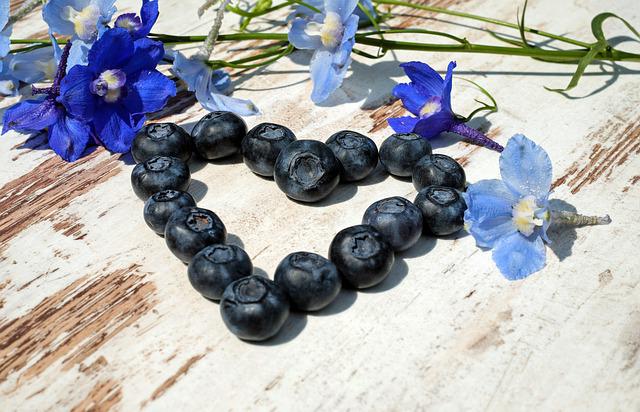
There are many different types of blue fruits, but blueberries may be the best. Blueberries are high in antioxidants, a good fiber source, and low in sugar and calories, making them a healthy snack option. Additionally, they contain compounds that can help protect against heart disease, cognitive decline, and other chronic diseases.
Table of Contents
So, What Makes Blueberries Blue in the First Place?
Anthocyanins are chemicals that are made by living things. The blueberry’s skin is full of them. The inside of the berry is, in fact, ivory white. This natural dye is only found on the skin. When the pericarp is bruised, the anthocyanins enter the damaged cells and turn red or purple.
Anthocyanin is a word that comes from the Greek words flower and kyanos (meaning blue). Suppose the acidity level of the anthocyanin is higher or lower than the color. It can go from dark red to blue, indigo to purple, or even deep violet. These are all-natural pigments that come from plants. When the pH level is low, anthocyanins are redder. When the pH level rises, they go from red to purple, blue to green, and then yellow because the pH level runs the gamut.
Why Aren’t There Any Naturally Blue Foods?
Natural pigments are what give plant foods their color. Generally speaking, chlorophyll is responsible for green and blue-green; carotenoids are responsible for orange, yellow, red, and reddish-orange. Anthocyanins are responsible for red, purple, and other shades of blue. Individual pigments can have a wide range of tonal values. One of the reasons there are so few naturally blue foods is that most fruits and vegetables have a variety of pigments. Chemical instability makes blue anthocyanins less stable than other pigments, so they tend to predominate. For the blue hue to take the lead in the mix, it must have a chemical makeup that is slightly altered. This is a once-in-a-lifetime event. Anthocyanin pigments and chemistry combine to give concord grapes their distinctive blue color. Finally, you get blue because of the blue pigment and the correct chemistry.
Other Types of Blue Fruits
Italian Prune
Prunus domestica
An oval-to-oblong shape with slightly tapered ends distinguishes Italian Prune plums from other varieties. Upon maturation, the fruit’s skin changes color from a dark red to a purple-black hue. Italian Prune plums have a white-blue bloom, a natural barrier against bacteria, insects, and moisture loss. Fruit that has bloomed indicates freshness, while soft fruit indicates waning ripeness. It has a semi-firm, dense, and slightly aqueous texture inside, with a golden-yellow to green-yellow color. The fruit’s light brown pit is located in the center of the flesh and can be easily removed from the body of the fruit.
Concord Grape
Vitis labrusca ‘Concord’
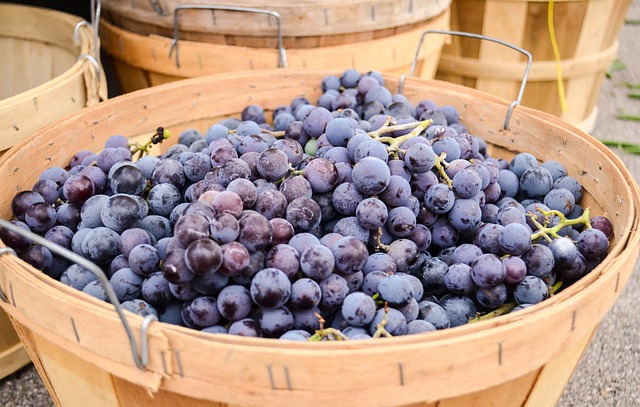
Medium-sized Concord grapes are oval and grow in loose clusters atop sturdy climbing plants. Tannin-rich and chewy, the thick skin can range in color from a deep blue to purple or nearly black. The skin’s surface also develops a powdery film or bloom that is natural waterproofing and prevents cracking. It is possible to remove the skin from the flesh of Concord grapes without harming it because they are a slip-skin variety of grapes. Many large seeds are embedded in the juicy, almost gelatinous flesh. Concord grapes are aromatic, tangy, and sweet, with a distinct musky flavor.
Sloe Plum
Prunus spinosa
Sloe plums are the fruit of a blackthorn bush, which can reach a height of 13 feet (4 meters) and a width of the exact measurement. However, it is usually trained as a hedge and trimmed to between 3 and 10 feet (1 to 3 meters.) Because it can live 40 to 80 years and grows about 1 foot (30 cm) per year, trimming becomes a year-long task. There are two ways to start a bush: cuttings or seeds. When low branches contact the ground, they may sprout roots and grow into a new tree.
Fahrenheit Blues Tomato
Solanum lycopersicum
A stunning cherry tomato with a deep blue hue! Cherry-sized fruits in clusters of 8 to 16 are produced by Fahrenheit Blues, which ripen to a dark blue with red beneath. Intense sunlight causes fruits to take on a deep red hue. In addition, the flavor of the blue variety is excellent.
Damson Plum
Prunus x domestica
During the late spring, Damson Plums come into bloom. They have not only tasty fruit but also pretty white clusters that cover the whole tree. It’s less likely that they will be damaged by frost because they bloom in the late spring. There are two to four years between when you plant a Damson Plum tree and when you can pick fruit from it.
There is a great contrast between the dark green foliage and the purple-blue fruit. A lot of fruit grows in the late summer and early fall. You can expect to pick perfectly ripe fruit before winter comes. A Blue Damson Plum is beautiful and tasty in jams and baked goods. But, on the other hand, Damson plums should not be eaten right away because they are not very good.
Sugar Mountain Blue Honeysuckle
Lonicera caerulea
Honeysuckle, which looks like raspberry or blueberry, is called Sugar Mountain Blue Honeysuckle. It is a honeysuckle with bigger, more flavorful berries than other honeysuckles. Sugar Mountain is best grown with other honeysuckles to get the most fruit from each plant. This honeysuckle makes a great and hardy hedge that is also a good fruit source. White flowers appear in late spring to early summer, and then deep purple berries appear in late summer and fall.
Saskatoon Berry
Amelanchier alnifolia
It looks like blueberries, but they’re actually from the apple family. Many people would say that the taste of Saskatoon is sweet and nutty. They also have a lot of fiber, protein, and antioxidants, which are good for your health. In late June or early July, berries are ripe. They can also be kept frozen all year round.
Filius Blue Pepper
Capsicum annuum ‘Filius Blue.’
It’s an ornamental chili pepper that’s very popular. An unusually bushy and compact variety of chili pepper known as Capsicum Annuum Filius Blue produces small, oval-shaped, blue fruits that change color to red as they mature. The brightly colored fruits cover the entire plant and create an eye-catching display in a garden.
Bilberries
Vaccinium myrtillus
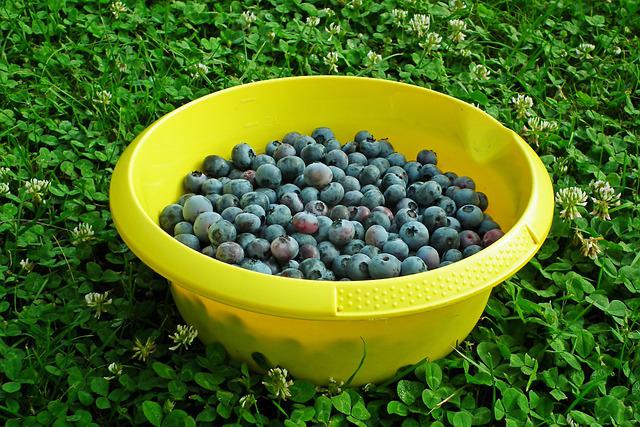
This plant produces an American blueberry-like berry. Herbal medicines are derived from dried fruits and leaves. Tannins are found in bilberry. They may be able to reduce swollen ankles and feet. Bilberry leaves may also help lower blood sugar and cholesterol levels and improve circulation in people with diabetes, thanks to their high concentrations of antioxidants.
Huckleberry
Gaultheria baccata
Both blueberries and huckleberries are commonly referred to as blue fruits due to their deep blue-purple hue. Plants that produce huckleberries have simple oblong leaves, either deciduous or subshrubs. Colors range from green to red to white to pink to greenish-red for the small urn-shaped flowers, which can be borne singly or in small clusters. There are ten tiny seeds in each of the fleshy fruits.
Blue Marble Fruit
Elaeocarpus angustifolius
Eastern Australia is the only place where this tree can be found. This tree can be found on a neighboring property that is not open to the public but is not part of the main garden. It’s no wonder the Blue Marble Tree got its common name from the incredible blue color of its fruits. This vivid blue fruit’s edible but unappealing green pulp and endocarp pit contains five seeds each. Rudraksha prayer beads are made from the fruit’s pit. It belongs to the Elaeocarpaceae family and is an evergreen perennial.
Juniper Berry
Juniperus communis
In the female seed cones produced by various junipers, the juniper berry is known as. Even though it’s not an actual fruit, it has scales that look like they’ve been fused, giving the impression that it is. The cones of a few species, particularly in European cuisine, are used as a spice and give gin its distinctive flavor. Juniper berries and spruce buds are the only conifer-derived spices.
Blue Corn
Zea mays
The Hopi Native American tribe, which hails from the southwest of the United States, was the first to cultivate blue corn. One reason the varietal survived is its role in the rituals of the tribe. On the health front, blue corn is rich in antioxidants that can help prevent heart disease, diabetes, and cancer, among other ailments. In addition, anthocyanins in blue corn are thought by some doctors to have anti-inflammatory and weight-loss properties.
Elderberry
Sambucus nigra
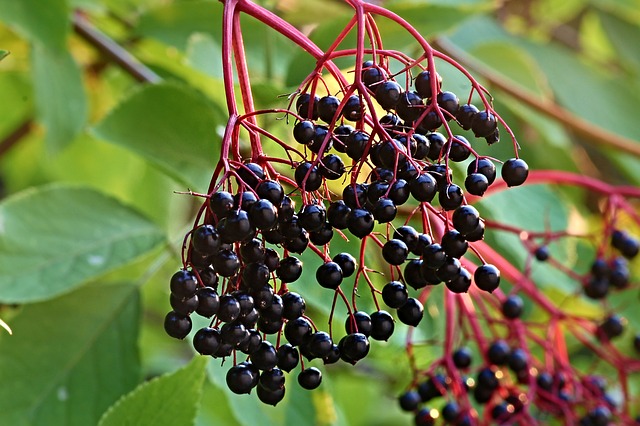
Most are found in temperate or subtropical regions of the Northern and Southern hemispheres, and many are located in the tropics. Their berries, which provide food for wildlife and are used in wine, jelly, pies, and medicinal purposes, and their ornamental qualities, are a vital part of our landscapes, forests, and ecosystems. Small yellowish-white saucer-shaped flowers with red, blue-black, black, or yellow berries appear in flat to roundish clusters on the plants. It is easy for elderberries to become naturalized, and some are even considered invasive outside of their native habitats.
Jamun
Syzygium cumini
Jamun, an Indian delicacy, is a colorful fruit with a sweet flavor. The deep blue or purple color of the fruit makes it so popular. The Jamaican plum, also called the black or Java plum, has spread to other tropical regions. It is a flowering tree fruit that ripens between May and June. It’s an excellent natural remedy for indigestion, diabetes, and arthritis pain. Dysentery and flatulence can be alleviated by eating the fruit. The following is a longer list of jamun’s health advantages.
Aronia Berry
Aronia melanocarpa
People who want to live a healthy lifestyle increasingly embrace this dark, round fruit native to North America, known as chokeberries, and they belong to the Rosaceae family.
Micronutrients and antioxidant properties make Aronia berries among the best fruits for health. Many health benefits are provided by the high levels of vitamin C, polyphenols, anthocyanins, and proanthocyanidins, which fight free radicals and positively impact human health.
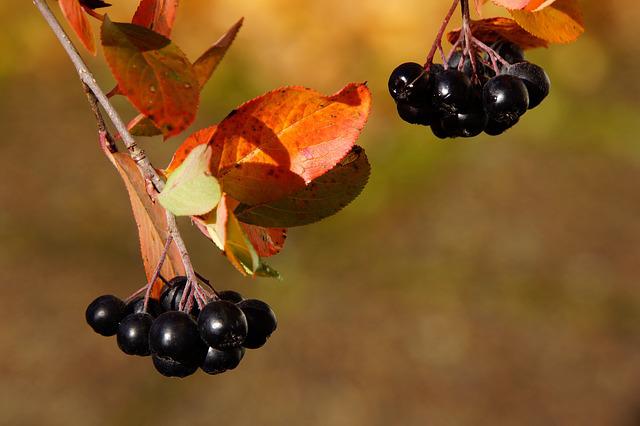
Blue Java Banana
Musa acuminata × balbisiana ‘Blue Java’
According to the Huffington Post, bananas grown in Hawaii, Southeast Asia, and Central America are creamier and fluffier than typical bananas. As long as they get enough sunlight, they can withstand temperatures as low as minus 30°F (-1.1°C).
